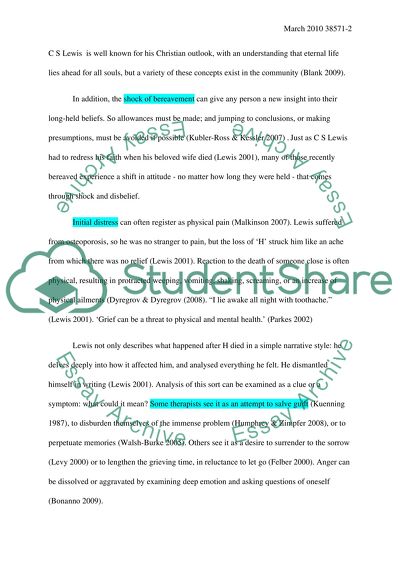Cite this document
(The Only Way Out is Through C S Lewis on Grief Essay, n.d.)
The Only Way Out is Through C S Lewis on Grief Essay. Retrieved from https://studentshare.org/literature/1564346-an-analysis-for-lewisrelection-following-the-death-of-his-wife
The Only Way Out is Through C S Lewis on Grief Essay. Retrieved from https://studentshare.org/literature/1564346-an-analysis-for-lewisrelection-following-the-death-of-his-wife
(The Only Way Out Is Through C S Lewis on Grief Essay)
The Only Way Out Is Through C S Lewis on Grief Essay. https://studentshare.org/literature/1564346-an-analysis-for-lewisrelection-following-the-death-of-his-wife.
The Only Way Out Is Through C S Lewis on Grief Essay. https://studentshare.org/literature/1564346-an-analysis-for-lewisrelection-following-the-death-of-his-wife.
“The Only Way Out Is Through C S Lewis on Grief Essay”, n.d. https://studentshare.org/literature/1564346-an-analysis-for-lewisrelection-following-the-death-of-his-wife.


